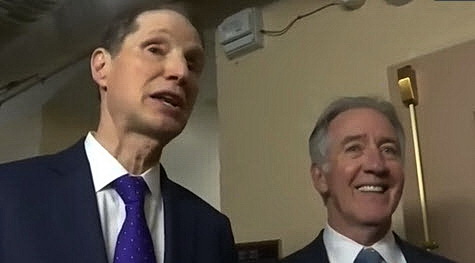
On January 20, the peaceful inauguration of Joe Biden as the 46th president of the United States and Kamala Harris as vice president took place on the steps of the Capitol, where two weeks prior a violent mob attempted to overturn the electoral process.
- President Biden in his inaugural address emphasized themes of national struggle and unity. He stated, “We must end this uncivil war that pits red against blue, rural versus urban, conservative versus liberal. To overcome these challenges – to restore the soul and to secure the future of America – requires more than words. It requires that most elusive of things in a democracy: Unity.”
- Vice President Harris – who is the highest-ranking woman of color in U.S. history – stated during a post-inaugural event, “This, too, is American Aspiration. This is what President Joe Biden has called upon us to summon now. The courage to see beyond crisis. To do what is hard. To do what is good. To unite.” (New York Times, Jan. 21)
Coronavirus Response
The new administration’s top priority is to develop and manage a coordinated, national public health and economic response to the COVID-19 pandemic. On its first two days in office it issued:
- A “National Strategy for the COVID-19 Response and Pandemic Preparedness,” which contains overarching goals to mount a “safe, effective comprehensive vaccination campaign” and to “safely reopen schools, businesses, and travel;” and
- A flurry of Executive Orders and communications to establish a White House COVID-response coordinator, a mask-wearing mandate for federal workers and on federal properties, and a commitment to re-join the World Health Organization. (Fact Sheet summarizing initial COVID response steps)
Additional “Day One” Orders

In addition to addressing COVID-19, the Biden Administration moved swiftly on “Day One” with 17 Executive Orders (EOs) covering a range of issues. (New York Times and CQ, Jan. 20) These actions include:
- Extending the federal residential eviction moratorium (scheduled to expire on January 31) through the end of March – with a request to HUD and other agencies to allow forbearance on payments of federally-guaranteed mortgages;
- “Restoring science” and “tackling the climate crisis,” such as by rejoining the Paris Climate Agreement, and directing the EPA and the Energy Department to reassess Trump-era rules on building energy codes as well as standards for appliance and motor vehicle fuel efficiency;
- Advancing racial equity and support for underserved communities; and
- Restoring protection for “Dreamers” under the Deferred Action for Childhood Arrivals (DACA) program, ending the ban on travel to the U.S. from primarily Muslim countries, and other immigration-related matters. The Roundtable joined an amicus brief to the U.S. Supreme Court last year urging that DACA protections should be re-instated for immigrants brought to the United States as children. (Roundtable Weekly, June 19, 2020 )
- (Biden has also proposed a legislative immigration overhaul that would provide a path to citizenship for the undocumented, which has already been met with some GOP opposition and “underscore[s] that the measure faces an uphill fight in a Congress that Democrats control just narrowly.” (AP, Jan. 19).
References:
- Fact Sheets from Biden Admin on Executive Orders – Jan. 21 and Jan. 22
- Exec Orders and Agency Review List on Climate Change
- White House, Presidential Actions
- Politico, Jan. 22, “Biden executive orders: The 17 things Joe Biden did on Day One”
The Biden Administration’s initial actions and policy agenda will be a focus of The Roundtable’s Jan. 26-27 State of the Industry Meeting (held virtually). Speakers will include:
- Sen. Sherrod Brown (D-OH) – Chairman, Senate Banking, Housing and Urban Affairs Committee
- Sen. Joe Manchin (D-WV) – Chairman. Senate Energy and Natural Resources Committee
- Sen. Ron Wyden (D-OR) – Chairman, Senate Finance Committee
- Dr. Scott Gottlieb – 23rd Commissioner of the U.S. Food and Drug Administration
-
Penny Pritzker – 38th Secretary of Commerce (2013-2017); Founder and Chairman of PSP Partners
The Roundtable will also unveil its 2021 National Policy Agenda publication soon, which will address policy issues in in the areas of tax, capital and credit, energy and climate, homeland security, and infrastructure and housing.
# # #







